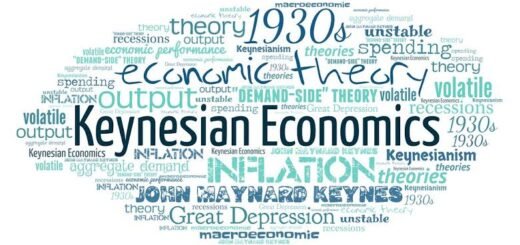Major theories of profit = Dynamic
Major theories of profit = Dynamic

Theory In 1900, Professor J.B. Clarke propounded the dynamic #1900 theory of profit. According to him, the difference between the price of the commodity and the cost of production is profit, but profit arises as a result of dynamic change. In the dynamic state, “five general changes keep taking place, each of which reacts upon the structure of society.” These changes are:
(i) population keeps increasing;
(ii) capital keeps increasing;
(iii) methods of production keep improving;
(iv) the form of industrial organisation keeps changing, less efficient shops etc. keep leaving the field and only the most efficient survive.
(v) the needs of consumers keep increasing.
In the static state, competition tries to eliminate all these five types of changes, with the result that each factor of production gets only as much as it produces. The selling price and the cost of production are both equal and hence there is no profit. What the entrepreneurs get is only the wages of management. The static state is a state of natural adjustment between the natural and actual prices of commodities, wages, interest, profit and their rates. If there is any deviation between the two, competition brings them into equality.
Thus profits are entirely the result of five dynamic changes, viz., changes in population, capital, technique of production, form of business organisation and the needs of the people. It is clear that according to Clark, two general conclusions follow from all these changes: “One, that prices, wages and interest will differ from static levels and two, that the static levels themselves are always changing. A special kind of dynamic change is an invention. An invention enables an entrepreneur to increase production and reduce costs. Profits emerge from the divergence between the selling price and the costs of production but such profits are temporary because as a result of competition other entrepreneurs also adopt the invention. Production rises and prices fall. On the other hand, competition to obtain the services of factors raises their wages and interest rates. Costs rise. This dual tendency of falling prices and rising costs eliminates profits. Thus, “Profit is an illusory quantity which entrepreneurs capture but cannot hold on to. It slips through their fingers and bestows itself upon all the members of society.” In the dynamic situation, “if competition worked without any check or hindrance, pure business profits would disappear as soon as they appear.” But, in reality, entrepreneurs derive profits because society is dynamic and constantly changing and always adjusting. Improvement occurs as a result of the attraction of profits and improvement raises the level of wages, but real wages always lag behind the standard rate with the result that profits appear.
Its Criticisms
The dynamic theory of profit as propounded by Clark has been severely criticised by Professor Knight on the basis of the following arguments:
1. Change is not anticipated: This theory makes no distinction between anticipated change and unanticipated change. If the five general changes assumed by Clarke are taken to be known in advance so that their course can be predicted, the entire argument based on the effects of those changes will not hold. In fact, not all changes are anticipated. Some are anticipated and some are not. To understand the problem clearly it is necessary to isolate its effects from the effects of the whole change.
2. Natural conditions are not static conditions: Professor Knight has objected to the use of ‘natural’ prices and rates in a dynamic society. According to him, a society may be dynamic and yet its natural prices may be equal to the costs of production so that entrepreneurs are not in a position to make any profit. For Clarke “it is misleading to define ‘natural’ conditions as static conditions.”
3. Unexpected changes bring benefits: Clark’s argument is also based on the prior knowledge of change that improvements are brought about by the attraction of benefits. But when the speculative element of invention and discovery of new natural resources is eliminated, the benefits disappear and what remains is only wages, interest and rent. This is because all improvements are anticipated. According to Professor Knight, dynamic changes bring benefits only when such changes and their consequences are unexpected.
4. Profit without dynamic change: Profit may appear even in the absence of the five dynamic changes mentioned by Clark. If future fluctuations are unpredictable, competition will not work well and profits will inevitably appear.
5. Profit is a reward for risk-taking: Professor Clark does not even mention that profit is a reward for risk-taking. In an article titled “Insurance and Profits”, he instructs that the profit which accrues as a reward for risk goes to the capitalist and not to the entrepreneur. But he does not tell that when the capitalist gets the profit, what will be the relation of profit to interest? In fact, profit accrues to the entrepreneur.
6. Profit is a conflictual excess: According to Professor A.K. Dasgupta, Clark’s concept related to economic dynamics is, in fact, the concept of comparative statics. “Profit is considered only as a phase in the systematic progress of the economy. In the final analysis it remains a ‘conflicting surplus’ whose importance is only from the point of view of raising the economic level.”


